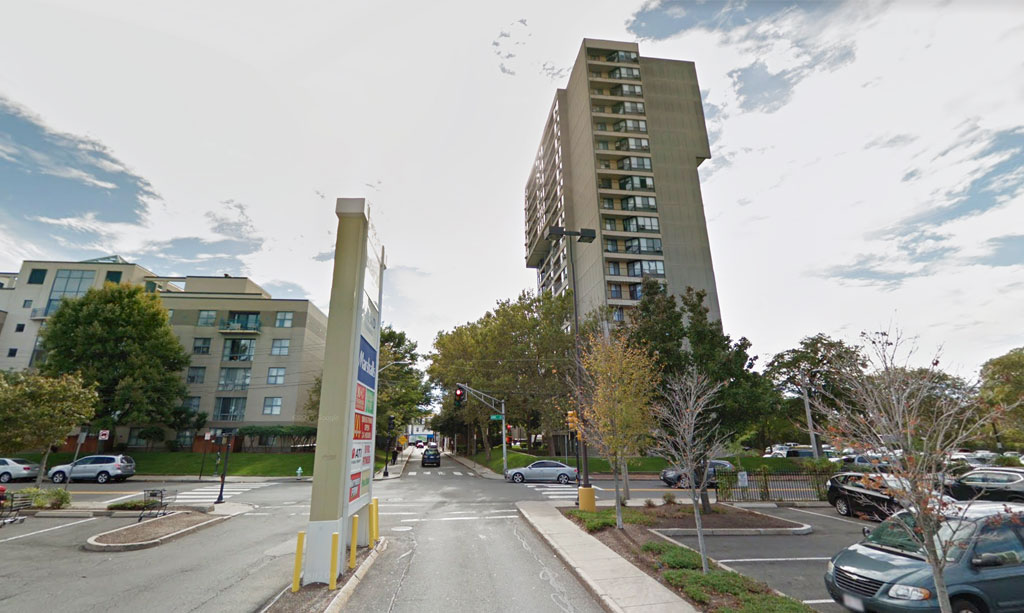Millers River rehab relies on Wells Fargo, bank facing scandal over housing finance
The Cambridge Housing Authority has once again attracted two of the largest banks in the country to invest in housing for very low income tenants in Cambridge. This time, though, one of the investors, Wells Fargo, has admitted cheating consumers and is under investigation for deception in the same kind of transactions that will support the Cambridge project.
On Aug. 30 the authority chose Wells Fargo and Citibank to help finance the $100 million renovation of Millers River, the 302-unit development for elderly or disabled tenants in East Cambridge. “We’re concerned about it,” executive director Mike Johnston said of Wells Fargo’s consumer fraud record and the latest allegations of investment deception. But agency staff decided “after looking into it further” to recommend Wells Fargo, he said. A resolution presented to the housing agency’s board said the bank should be chosen “based on the strength of the Wells Fargo proposal and CHA’s prior very positive experience with the firm.”
Both banks won the bid in 2014 to invest in the first phase of the agency’s Rental Assistance Demonstration project, which rehabilitated five developments at an estimated $320.9 million cost. Wells and Citibank contributed a total $210.6 million: $109 million in loans from Citibank and $101.6 million in investments from Wells Fargo in return for low-income housing tax credits.
Bank scandals
It was Citi that was in the spotlight then, having paid millions in penalties to the government for selling risky mortgage-backed securities during the financial crisis. Now, Wells Fargo is under scrutiny after admitting that it defrauded thousands of consumers by setting up savings and checking accounts in their names without their knowledge. The bank is also accused of requiring car loan customers to buy unneeded auto insurance.
The most recent allegations against Wells Fargo involve accusations that it colluded with housing developers to lowball the price of low-income housing tax credits, the same financing vehicle that the agency is relying on for its sweeping RAD renovation initiative and for Millers River. (Millers River, though, is being rebuilt under a different program called “disposition”).
But the authority chose Wells Fargo to invest in Millers River partly because the bank submitted the highest price for tax credits among the bidders that sought to support the project.
“As for this deal and our other deals with WF, we are confident that the pricing we received was very competitive to or above market pricing – so the opposite of the lowball. We have a very rigorous procurement and selection process aimed at getting the best pricing that is available in the market. I am confident we were able to achieve that with our RAD Phase 1 transaction, and now with Millers River,” agency planning and development director Margaret Moran said in an email message.
How the financing works

Millers River, public housing for the elderly and younger disabled, is deemed in dire need of rehabilitation. (Photo: Google)
The proposals approved on Aug. 30 call for Citibank to provide $82 million in construction and $51.8 million in permanent loans, and for Wells Fargo to buy $66.2 million in tax credits. Negotiations are continuing so details could change.
The tax credit transaction will be delayed until after construction to reduce costs, Moran said. If it occurred earlier, contractors would have to pay sales tax on materials, because Millers River would be owned by the private investor instead of being able to claim an exemption as a government entity, she said.
Using tax credits to help pay for RAD and Millers River requires the housing agency to transfer ownership of the housing to a private entity held by investors. The housing must remain low-income and the agency will continue to manage the properties through nonprofit companies controlled by it. The agency has promised tenants that their rent and protections won’t change, and it can regain ownership of the developments after tax credits expire in 15 years.
Banks collect hefty fees on the tax credit and loan transactions in addition to interest on the mortgages and the benefit of lower taxes from the tax credits. There was anxiety about the tax credit program after Congress approved corporate tax cuts last year; affordable housing developers and consultants expected the price of the low-income housing tax credits to drop because they would be less valuable to investors.
That was not the story with Millers River. The first round of tax credit bids for the Millers River project didn’t meet expectations, according to a presentation to the board. After the agency narrowed the field to two financial companies and asked for a better deal, both submitted bids above the amount staff said was needed.
Millers River, built in 1971, is one of the most dilapidated developments in the authority’s public housing portfolio. According to an agency presentation to its board, its electrical systems are antiquated, the ventilation system doesn’t work, plumbing is “brittle and fragile” and walls and windows leak.
Grand Junction land
With financing apparently secure, agency officials are still negotiating with the city over plans for renovations. Cambridge wants the authority to give up a 10-foot strip of land next to the railroad track that runs along the Millers River site to build the planned Grand Junction bicycle and pedestrian path, according to a memo presented to agency commissioners Aug. 22. The agency has already redesigned the project to accommodate the change.
Still, the smaller site may interfere with a plan to build as many as 200 additional apartments on the site in the future, plus 40,000 square feet of commercial space and a 125-car parking garage, the memo said. Because of parking requirements, losing the 10 feet could cut out up to 100 housing units. Although the memo said the housing would be low-income, Johnston has said the project, if it is ever built, could house market-rate tenants but the majority of units on the site, including existing ones, would be “deeply affordable.”
The agency has asked the architect for the Millers River project to appraise the value of the 10-foot by 400-foot strip of land, taking into account the lost opportunities, the Aug. 22 memo said. Presumably that would factor into the price the authority would ask for giving up the strip of land.
In July, the City Council voted down a zoning petition that sought to prepare for climate change but which the authority said might make funding the Millers River project uncertain.


